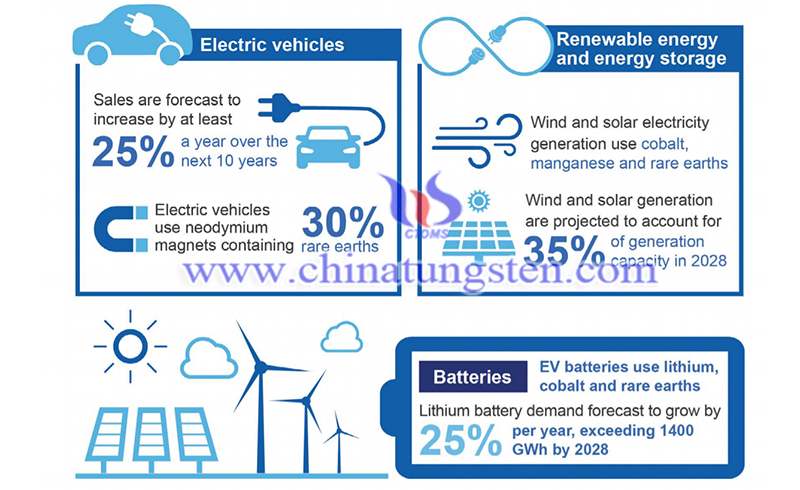Australia Committed to Development of Critical Minerals Such as Rare Earths
- Details
- Category: Tungsten's News
- Published on Wednesday, 16 December 2020 20:24
Australia is committed to the development of critical minerals (CMs) such as rare earths. Australian Federal Resources Minister Keith Pitt reiterated that Australian aspirations to become a world leader in the exploration, extraction, production and processing of CMs.
Critical minerals are metals and non-metals that have important economic functions, can't be easily substituted and face some degree of supply risk. Supply risks can stem from geological scarcity, geopolitical issues, trade policy or other factors. What constitutes ‘critical’ differs between countries, depending on essential demand applications, productive capacity and import dependence.

CMs are important for industrial progress and emerging technologies. They are used for renewable energy systems, electric vehicles, rechargeable batteries, consumer electronics, telecommunications, specialty alloys, and defense technologies. Growth in these markets is expected to boost world demand for CMs. Australian resource endowment, mining capability and existing processing infrastructure mean it is well placed to support this demand.
Pitt pointed out in a speech at the International Mining and Resources Conference that the Critical Minerals Facilitation Office was established to coordinate and deliver on this goal. "Covid-19 has highlighted the importance of CMs and improving the security of global supply chains. Whether it is mobile phones and laptops, medical equipment or electric cars, rare earths are the essential component of so much manufacturing today and into the future," the Minister said.
“We will be working with the sector to develop roadmaps identifying roadblocks and growth opportunities, for both mining and processing, and I know this work will benefit immensely from the progress already made by Mining Equipment, Technology and Services (METS) Ignited."
Earlier this year, the Australian government released the second edition of the "Australian Critical Minerals Prospectus", demonstrating Australia's tremendous capabilities in key minerals in order to attract investment.
The prospectus identified hundreds of key minerals and rare earth element projects in Australia's major new business opportunities, and detailed more than 200 potential investment projects, including in lithium where it is already the world's largest producer and other minerals including cobalt, manganese, antimony, zirconium, titanium, tantalum, zirconium, tungsten, vanadium and niobium.
At the same time, Pitt told delegates that the government was also working towards lightening "onerous regulations" that would impede investment and job creation in the resources sector.
"That's why the government has asked the Productivity Commission to review how we can reduce the regulatory burden on the resources sector. Its final report is due later this year, and in the meantime, we are pushing on with the reforms to the Environmental Protection and Biodiversity Conservation Act. Certainty, transparency and enhanced efficiency are the hallmarks of good regulation, and this will guide any further reforms we make," the Minister said. The measures Australia takes would make it to become a world leader in the exploration, extraction, production and processing of critical minerals such as rare earths and tungsten.
- Rare Earth Manufacturer & Supplier, Chinatungsten Online: www.chinatungsten.com
- Tungsten News & Prices of China Tungsten Industry Association: www.ctia.com.cn
- Molybdenum News & Price: news.molybdenum.com.cn
- Tel.: 86 592 5129696; Fax: 86 592 5129797; Email: sales@chinatungsten.com



 sales@chinatungsten.com
sales@chinatungsten.com